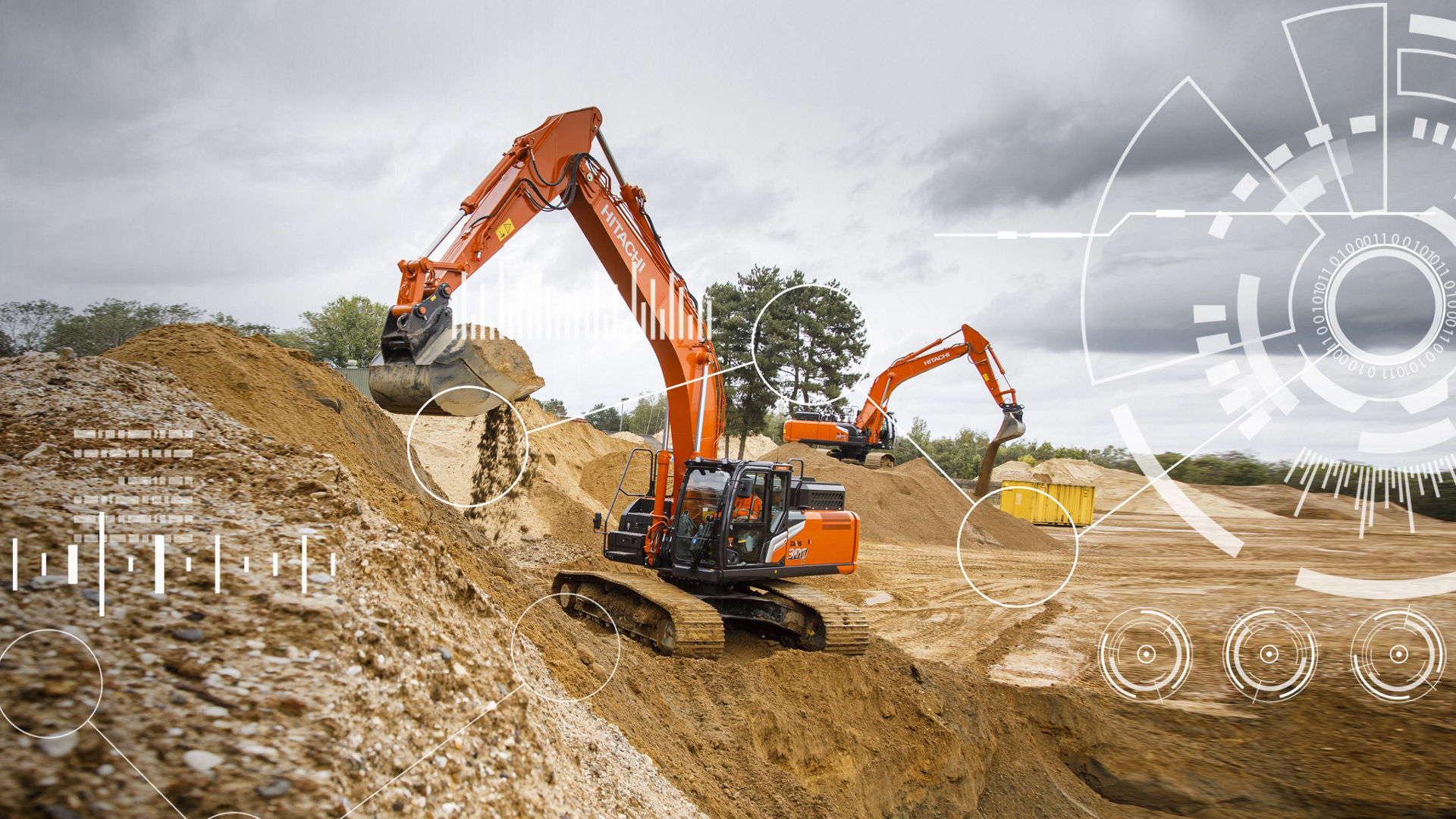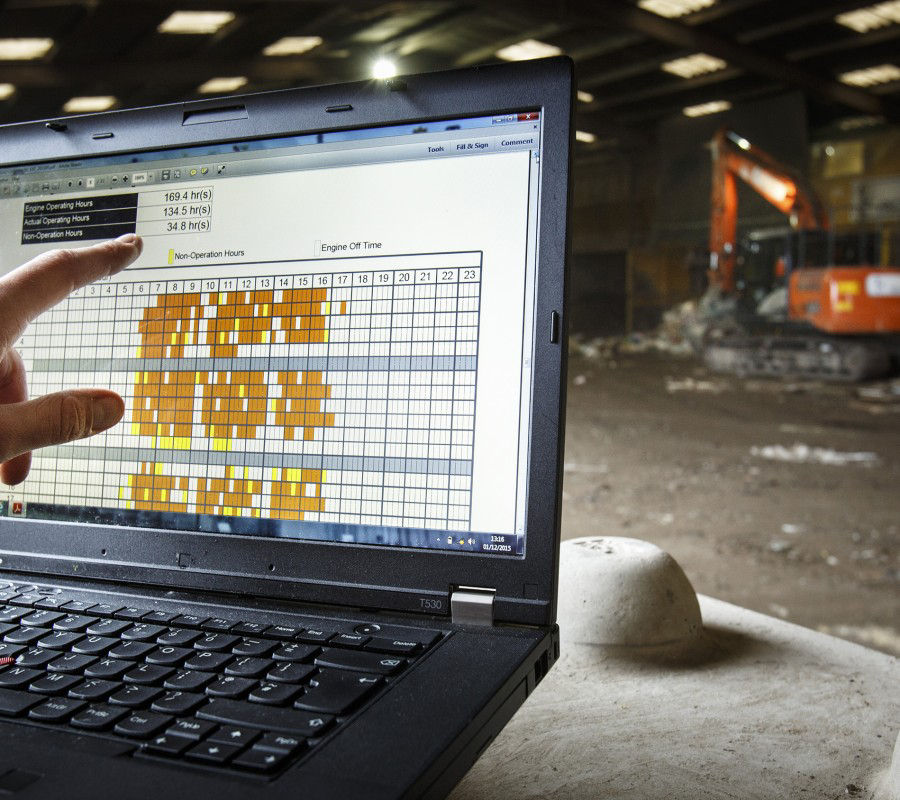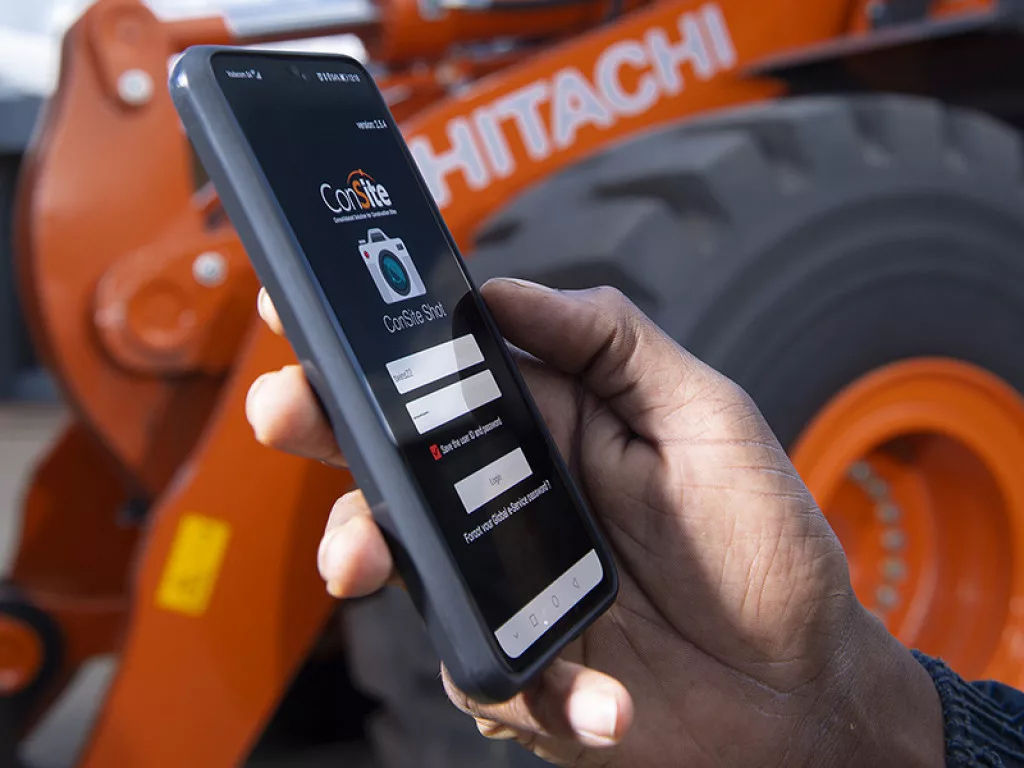Bauma 2025: The road to climate neutrality

The future of construction
The first of these is climate neutrality – strategy, investment, roadmap – and achieving this by 2050 is technologically feasible. For the transformation to be cost-effective for all stakeholders, new legal frameworks and structures are needed to enable affordable construction.
In the future, approaches to achieving climate-neutral construction include:
- greater machine efficiency
- more intelligent design of construction processes
- optimised machine operation
- and the use of alternative energy sources.
Process optimisation in the use of Hitachi construction machinery promises particularly good results regarding climate neutrality. There is also significant potential for reducing CO₂ in the operation of Zaxis excavators, EH rigid dump trucks and ZW wheel loaders. In addition to appropriate training for machine operators, the industry is increasingly relying on digital assistance systems and (partial) automation of processes.
A digitial experience
At Bauma, the emission-related possibilities offered by digitisation and automation through Hitachi will become particularly clear. For example, we’re hosting an exclusive ‘Digital Experience’ to highlight the capabilities and benefits of our digital solutions.
In response to the many challenges facing Europe’s construction industry, we are focusing on technological advancements and digital developments to build innovative solutions for its customers. A perfect example is the all-in-one fleet management tool, LANDCROS CONNECT, which provides instant access to the latest performance data on Hitachi construction machinery, as well as other brands of equipment.

Hitachi ConSite solutions
Alongside new solutions, we are continuing to develop and update our existing digital offering. An important element is the ConSite family of applications and services. This is unique due to its comprehensive approach to machine health management, and industry-leading innovations, such as the oil condition monitoring sensor.
Now the ConSite platform is evolving to provide even more information about machine health. At Bauma, we will show how ConSite Pocket, ConSite Scan, ConSite Helmet, and the 3D parts catalogue are being enhanced with advanced technology.
In addition, further updates are being made to the Hitachi telematics API, reflecting the increasing adoption of this technology, and customers can now request 2D and 3D CAD drawings of their Hitachi construction equipment for use with BIM (building information modelling).

A demonstration in automation
Looking to automation, the ZE135 autonomous excavator – based on the electric 15-tonne Hitachi ZE135 and developed by KTEG in collaboration with Gravis Robotics – will take centre stage at the demonstration area at Bauma. While such machines remain in the development phase for now, they offer huge potential to transform the construction industry.
With advancements in AI, robotics and machine learning, they will be able to take on more complex and delicate tasks. In addition, they will help to boost productivity, address labour shortages, improve on-site safety and deliver more sustainable operations.
Autonomous excavators bring together a range of technologies including robotics, artificial intelligence (AI), GPS, LiDAR sensors and cameras. The goal is to devise a complete system that can make sense of a construction site as the excavator performs the usual tasks of digging, grading and trenching.
Why stop reading now? Others also liked:

Subscribe
Keep up to date with the latest news from Hitachi Construction Machinery (Europe) NV (HCME).



